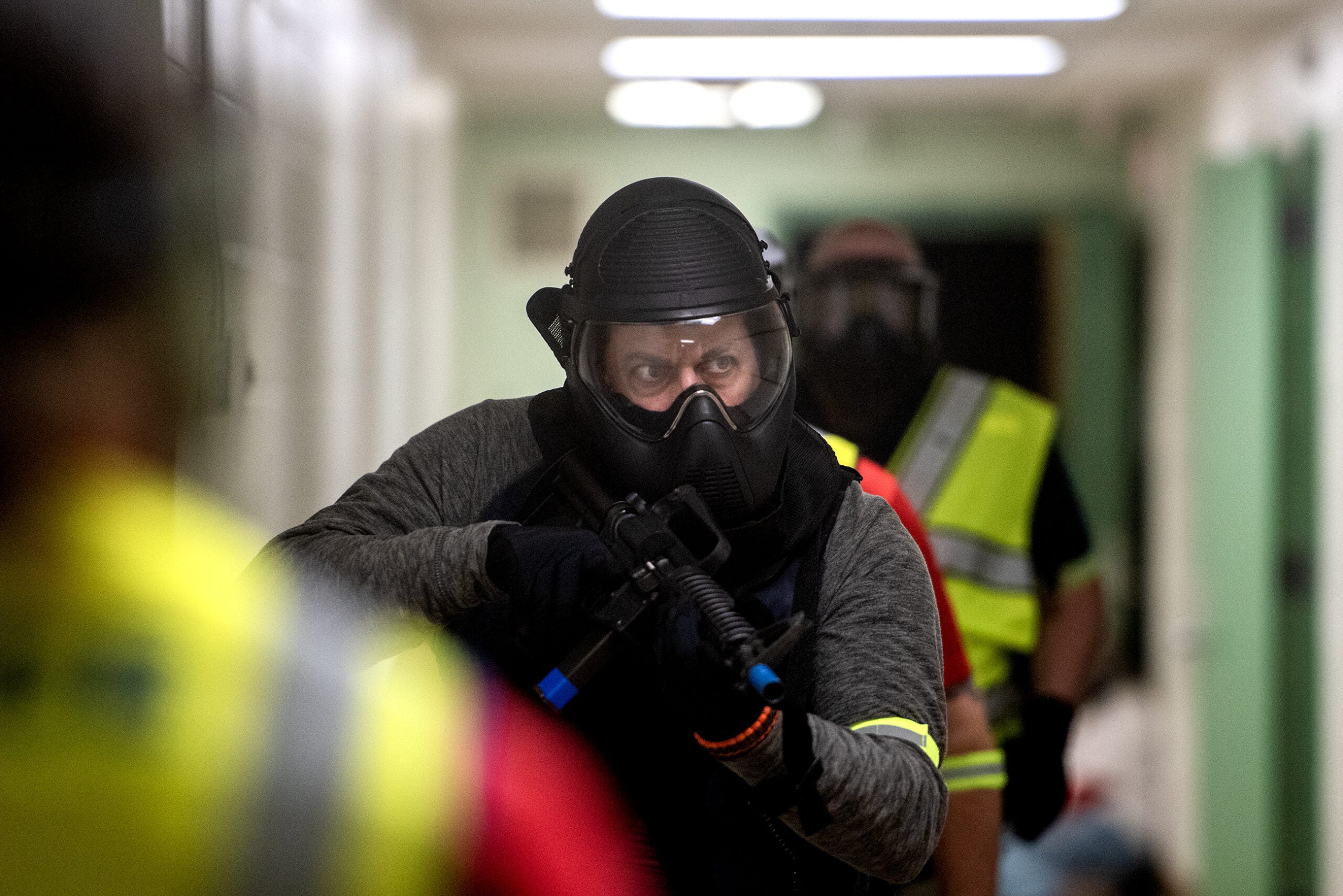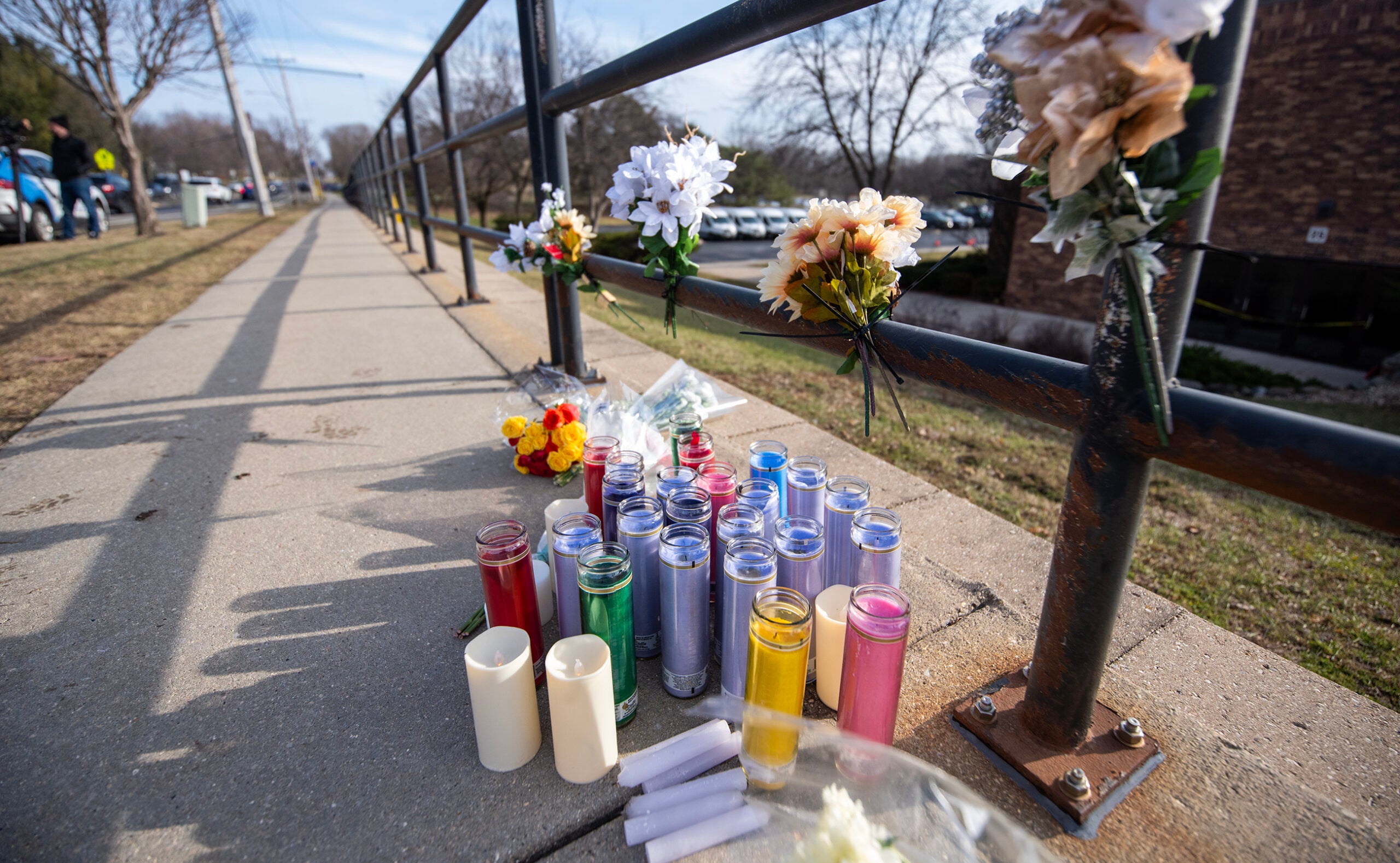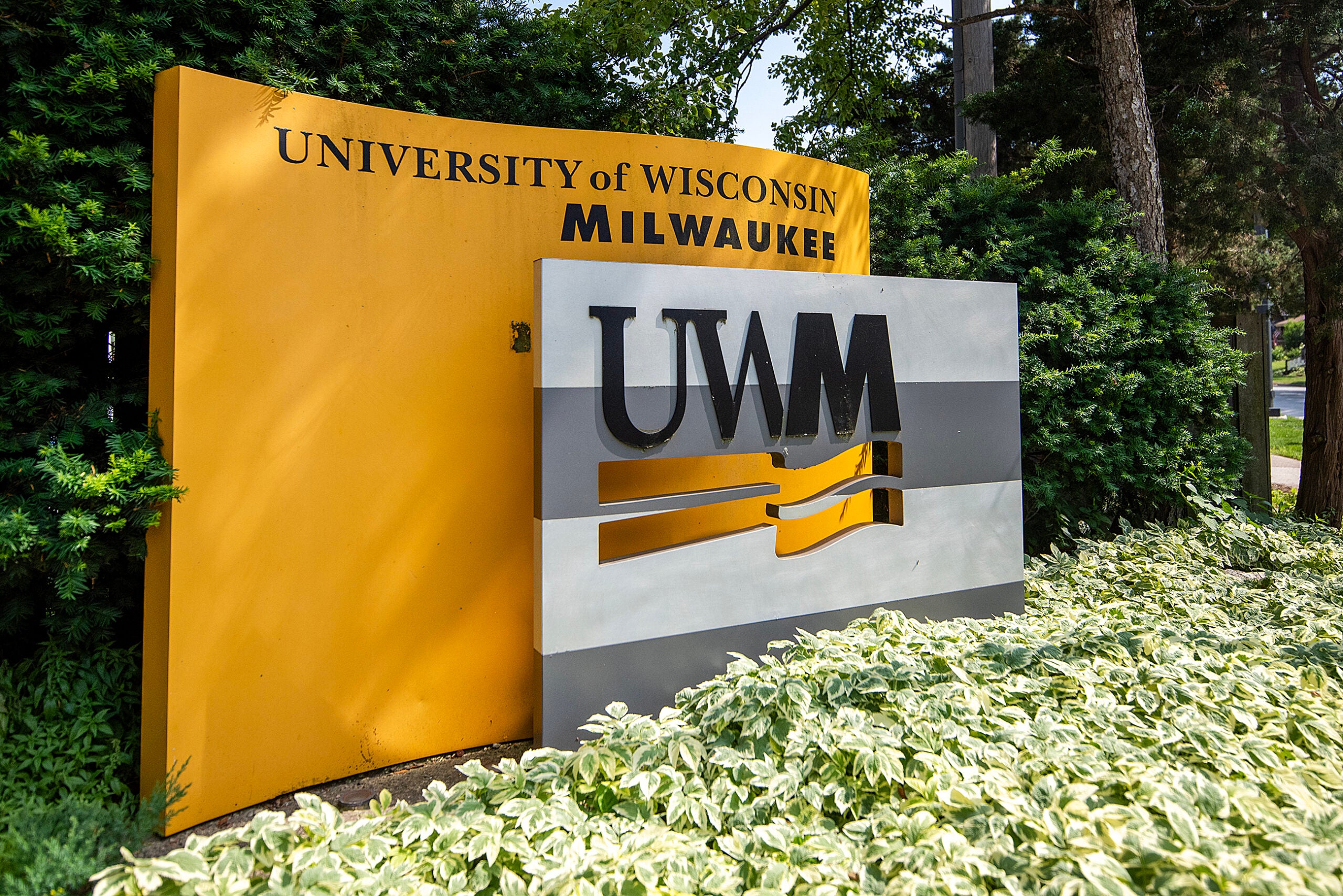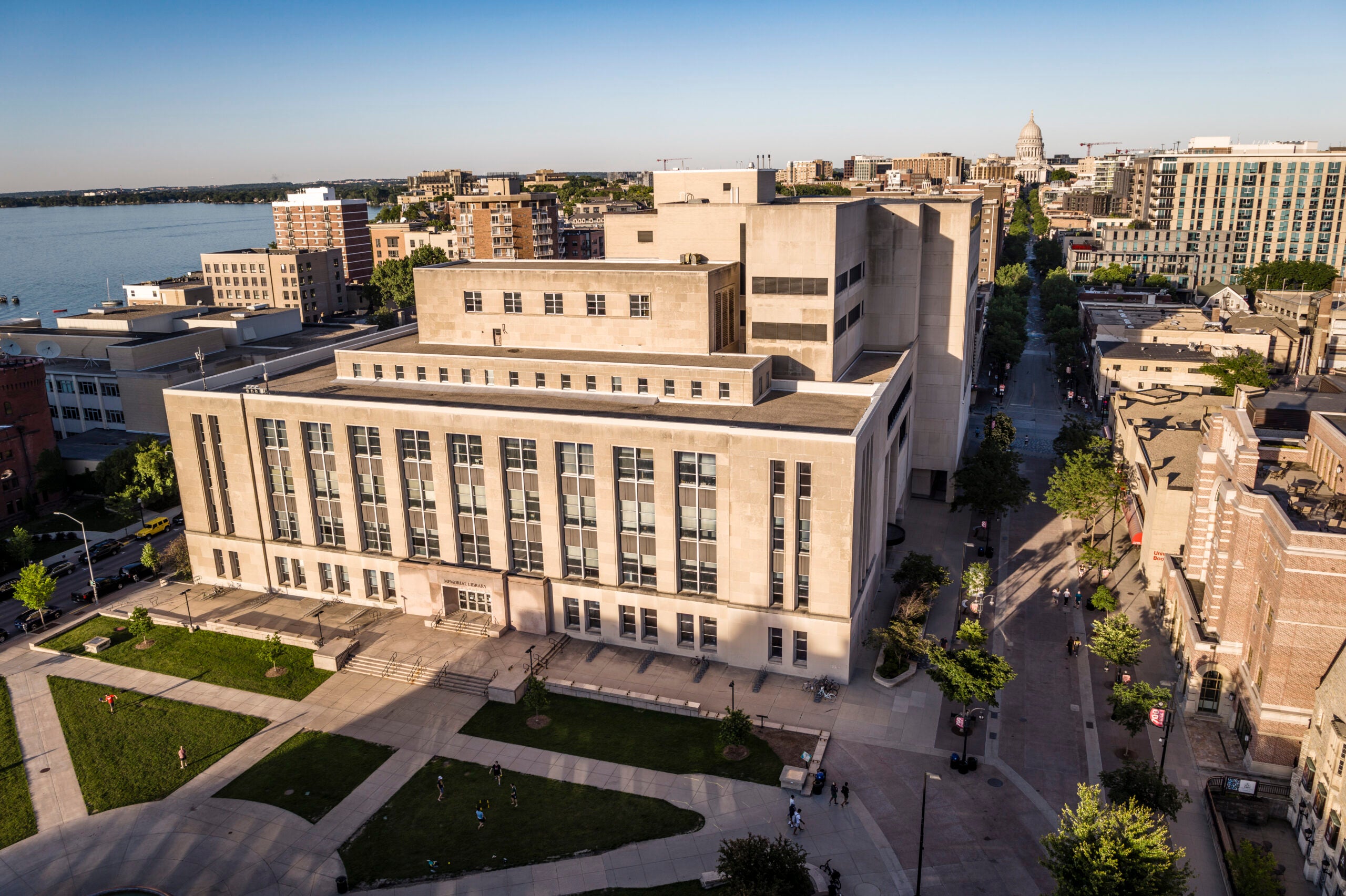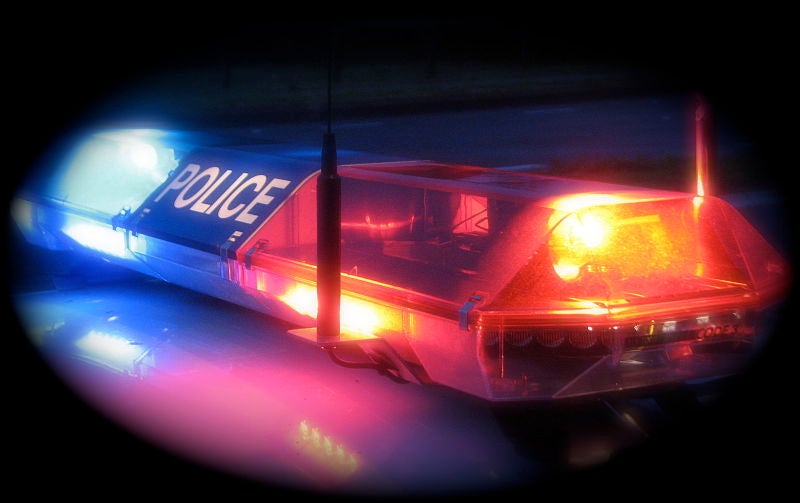It’s eerily quiet in the vacant Biotron Laboratory building on the University of Wisconsin-Madison campus. It’s been closed for two years, but various pieces of office equipment are still scattered throughout offices and what were once state-of-the-art, climate-controlled research labs sealed with thick metal doors. That silence is about to be shattered by the UW Police Department’s annual Active Killer Training.
A blast from the 9mm blank reverberates down the concrete hallway. A cloud of dust falls from the ceiling with each pull of the training pistol’s trigger. Around the corner, an officer wearing a plastic facemask and carrying a special gun that fires high-powered paintballs called “simunition” rushes toward the shots. Each one represents an active shooter taking a life.
The officer passes colleagues playing the role of wounded students and employees crying for help as they lay on the floor. He cannot give aid now. In a real mass shooting, police are trained to stop the killing before they can stop the dying.
News with a little more humanity
WPR’s “Wisconsin Today” newsletter keeps you connected to the state you love without feeling overwhelmed. No paywall. No agenda. No corporate filter.
In a small lab to the left of the hallway, an officer playing the shooter is waiting with yet another wounded individual. When the two meet, there are shouts and a rapid volley of gunfire from the simunition pistols. This is just one of multiple scenarios each officer is drilled on this April morning.
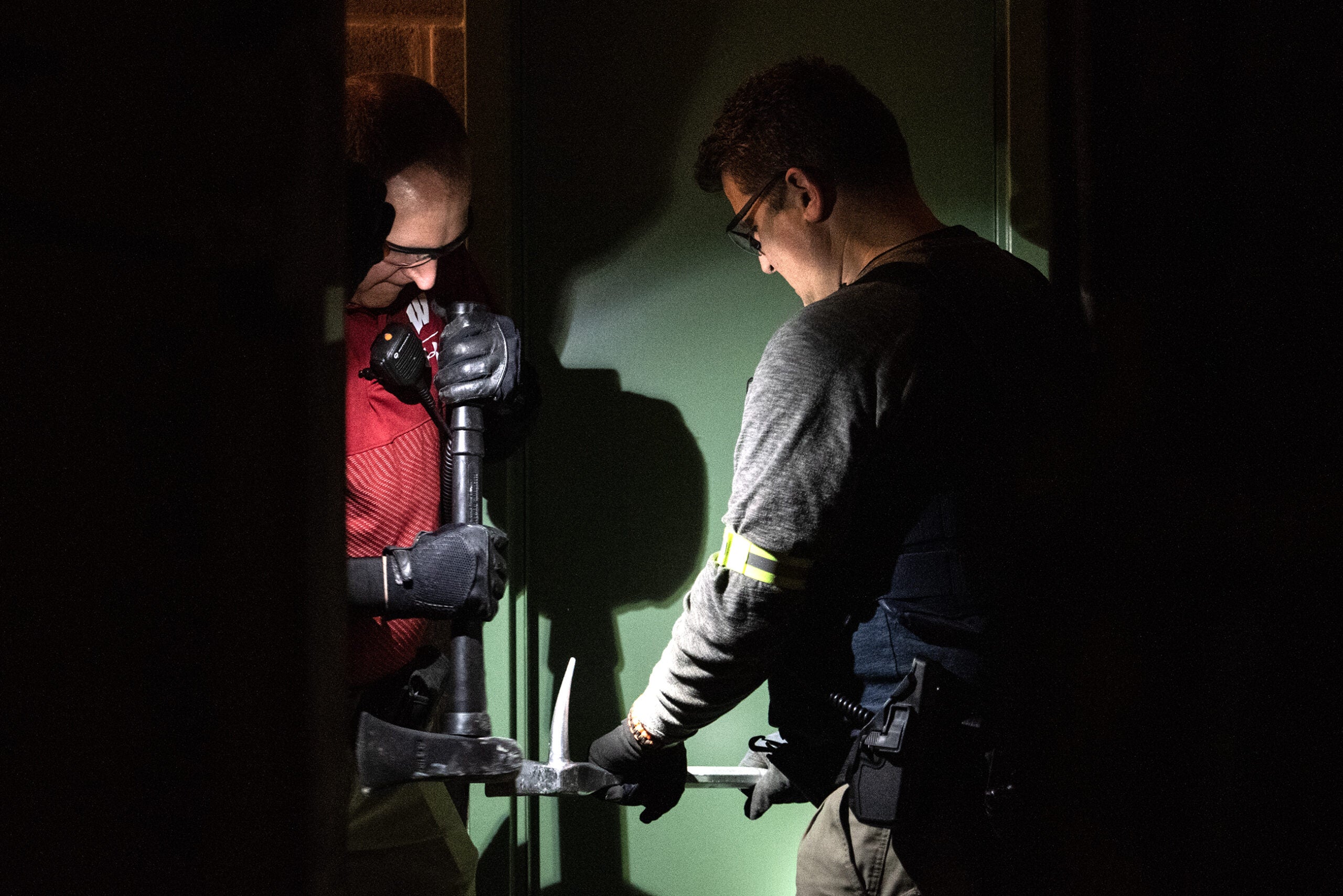
The United States has seen more than 200 mass shootings in 2023, according to the Gun Violence Archive, which tracks any shooting in which four or more people are shot or killed. Included in the data are high-profile shootings at an outdoor mall in Texas, a Christian school in Kentucky and at Michigan State University. As such events have become part of life in America, simulations like these have become a routine part of law enforcement training. Students on UW campuses have other sorts of trainings and preparation for a potential shooting. It’s become a nearly routine part of reality for people in public spaces that may become targets.
Everyone in the Biotron building knows these are training exercises, but there’s still a heaviness in the building. They’re loosely based on real mass shootings, and for officers like Lt. Adam Boardman, they are a reminder that he could be called on to engage an active shooter.
“Even if, in the back of my head, I don’t want to do that — you don’t want to go in there, but that’s what you have to do,” Boardman said. “You’ve got to run in and you have to get that stopped.”
During the training, multiple officers are hit with the paint rounds, which leave weeping red welts, and there’s a look of anxiety and determination on officers’ faces as they rush toward the gunfire.
“We’ve always trained on active killer situations annually,” UWPD officer and instructor Jake Lepper said. “It’s the unfortunate reality that campuses are not immune from this kind of violence.”
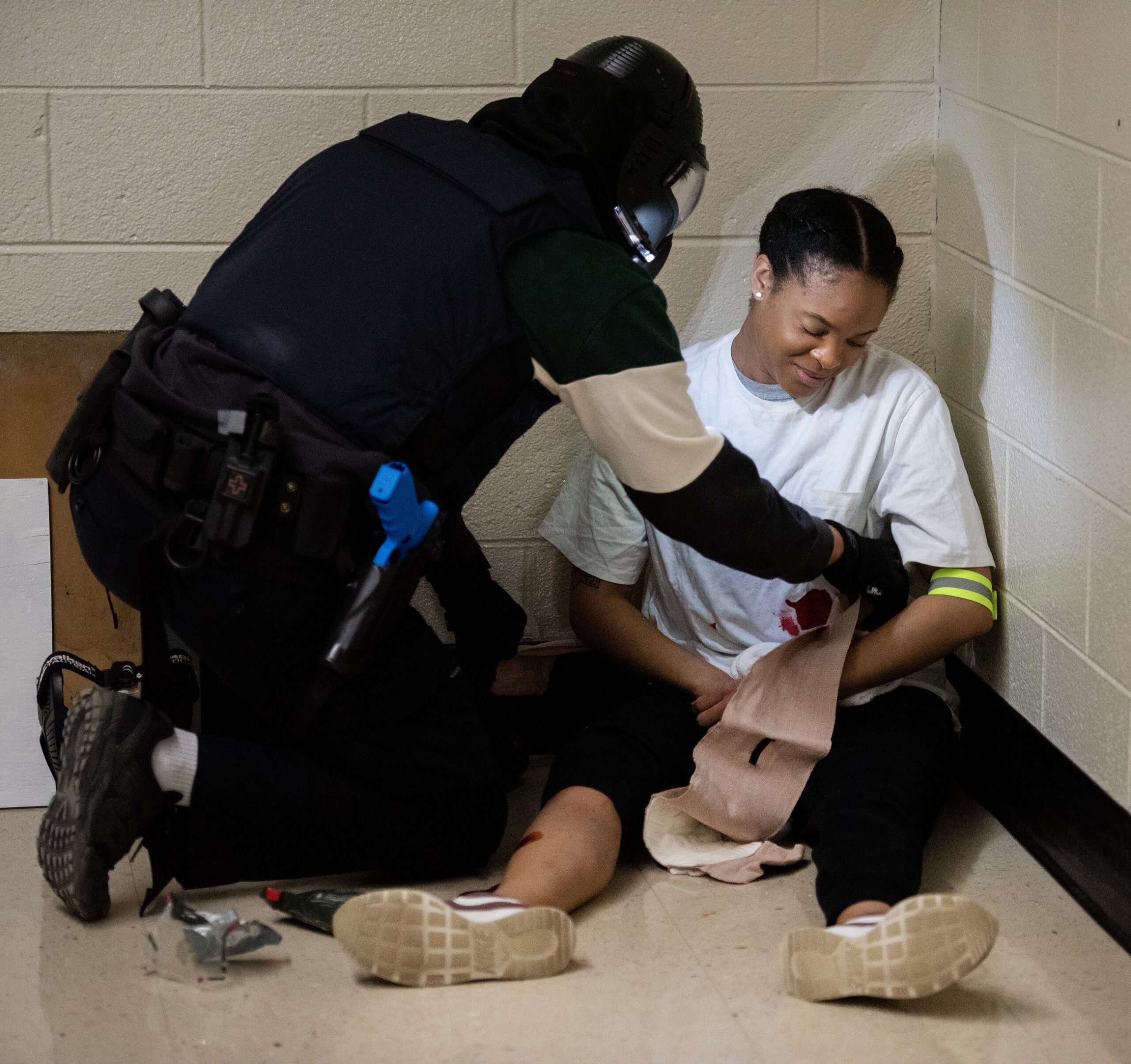
College students have learned to prepare for potential campus shootings
The first mass shooting at a college campus happened in 1966, when a student and ex-Marine shot 45 people from a clock tower on the campus of the University of Texas at Austin. The deadliest college shooting came in 2007, when a student at Virginia Tech chained the doors to an academic building shut and shot into classrooms, ultimately killing 32 people.
Since then, there have been seven more mass shootings on college campuses. In February, a shooter opened fire in two buildings at Michigan State University and killed three students before killing himself. UW-Madison freshman Simona Laudicina has a personal connection to the tragedy.
“I had some friends who went there and explained their experiences hiding,” Laudicina said. “It never crossed my mind that it would happen in college.”
Sitting on the sunny terrace steps at UW-Madison’s Memorial Student Union in April, Laudicina and fellow freshmen Mary Bair traded stories about training for active shooters in middle school and high school.
“I’ve always been told that it’s not an if, it’s more of a when it’s going to be something that I have to deal with,” Bair said. “And so every time that I’m in a large space, I’m always told to find the nearest exit and sort of just have a mental preparation of how I was going to deal with something like this.”
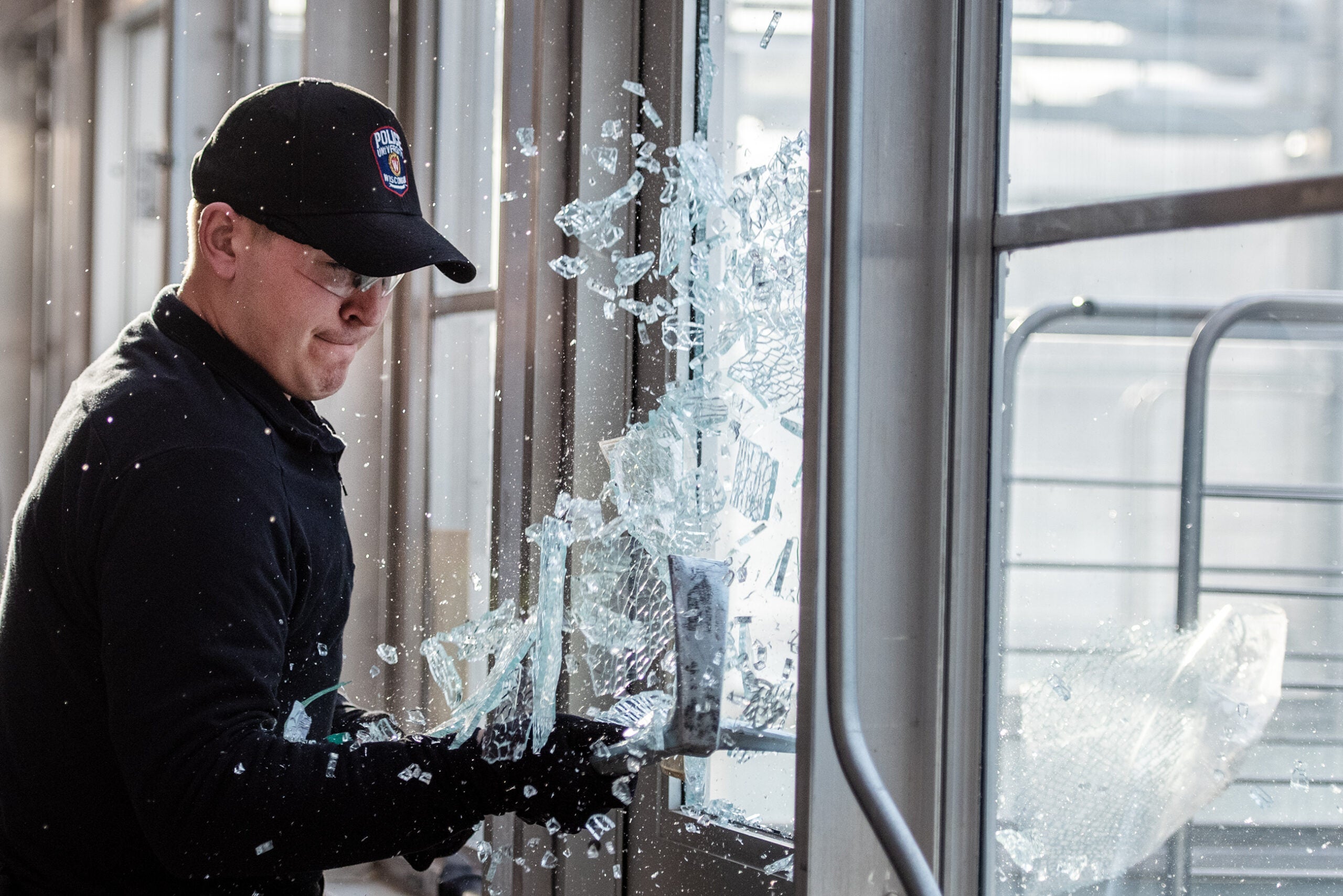
There were metal detectors at the doors of Laudicina’s high school. On normal days, she said, one out of maybe 20 students would have to walk through. On days when there were threats of violence, either online or scrawled in a bathroom door, she said they’d all be screened. The line of students would round the block for hours, which Laudicina said was “a really scary situation.”
As for the active shooter drills, Laudicina said they were essentially taught to hide in a corner of a room.
“And when you hear about actual shootings happening, how effective has that been?” Laudicina said. “It was good to know that there was a plan, but the plan wasn’t really foolproof.”
Bair and Laudicina say it’s beyond frustrating that politicians haven’t passed major gun reforms restricting military style rifles like the AR-15, used in many mass shootings.
Last Summer, President Joe Biden signed a bipartisan gun safety bill following mass shootings at the Robb Elementary School in Uvalde Texas and a grocery store in a predominantly Black neighborhood in Buffalo, New York. It tightened bans on convicted domestic abusers owning guns, included money for state’s to implement “red flag laws” aimed at preventing people showing signs of being a threat to themselves or others from buying or owning a gun.
Sitting nearby in the grass with friends, doctoral student Vrshank Jambur said mass shootings didn’t happen when he grew up in India.
“But once you come here and when you start hearing about it, that’s when you start feeling a little scared,” Jambur said.
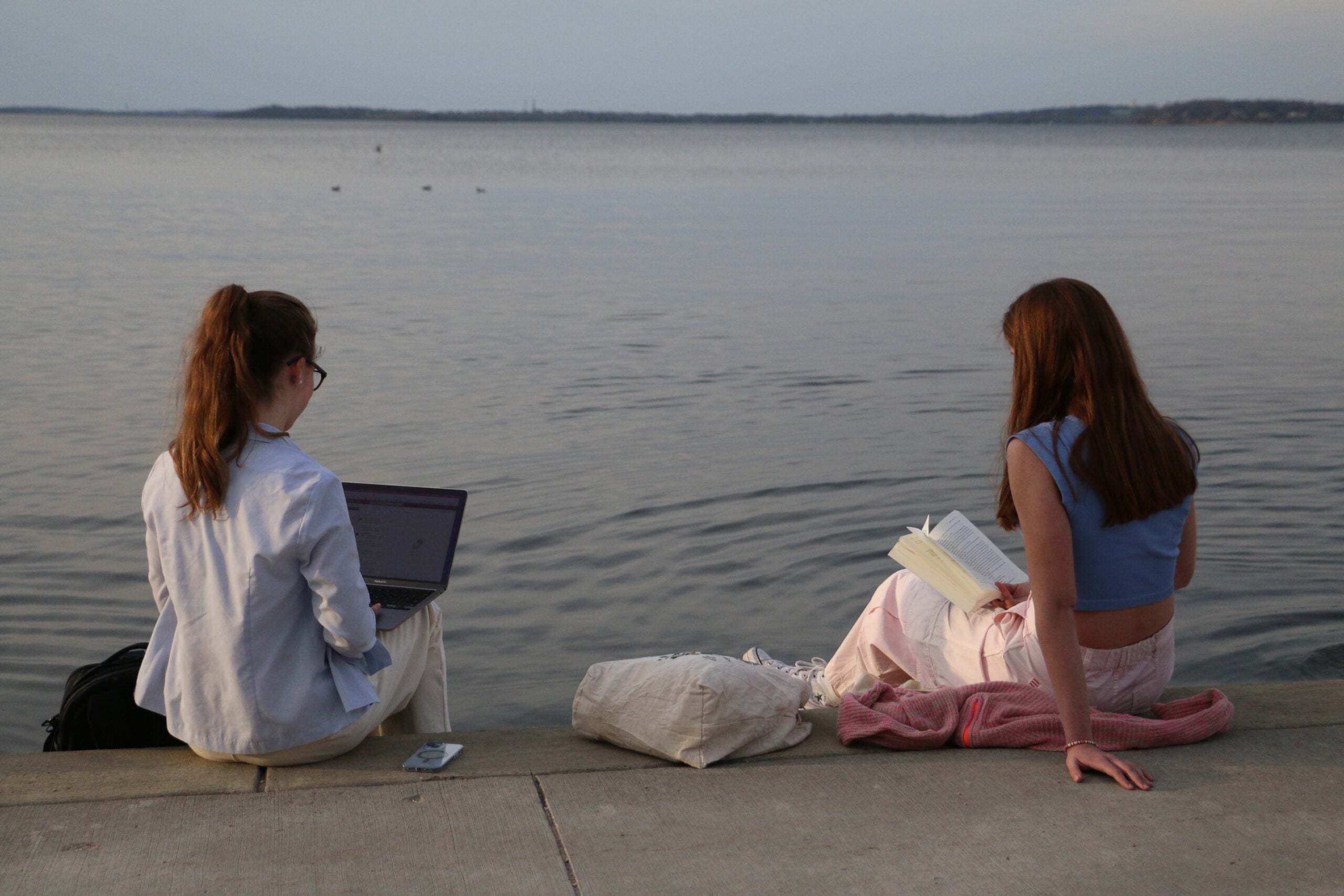
Do active-shooter drills traumatize students?
UWPD Lieutenant Jeff Ellis was in high school 1999 when he learned about two students in Columbine, Colorado killing 10 of their classmates. During his 19 years in law enforcement, he’s seen drastic changes in how officers are trained to respond.
Ellis said when Columbine happened, the first responding officers were trained to wait for SWAT teams to arrive and engage the killers. That was the protocol until a 20-year-old man in Newtown, Connecticut walked into Sandy Hook Elementary School with an AR-15 rifle and murdered 20 first-graders and six staff members.
“Post-Columbine, we started taking these three- and four-man teams and entering buildings,” Ellis said. “And that was really how we looked at things until Sandy Hook. And then when Sandy Hook happened, we realized that one- and two-man teams can be just as effective and quicker because we’re not sitting there and waiting.”
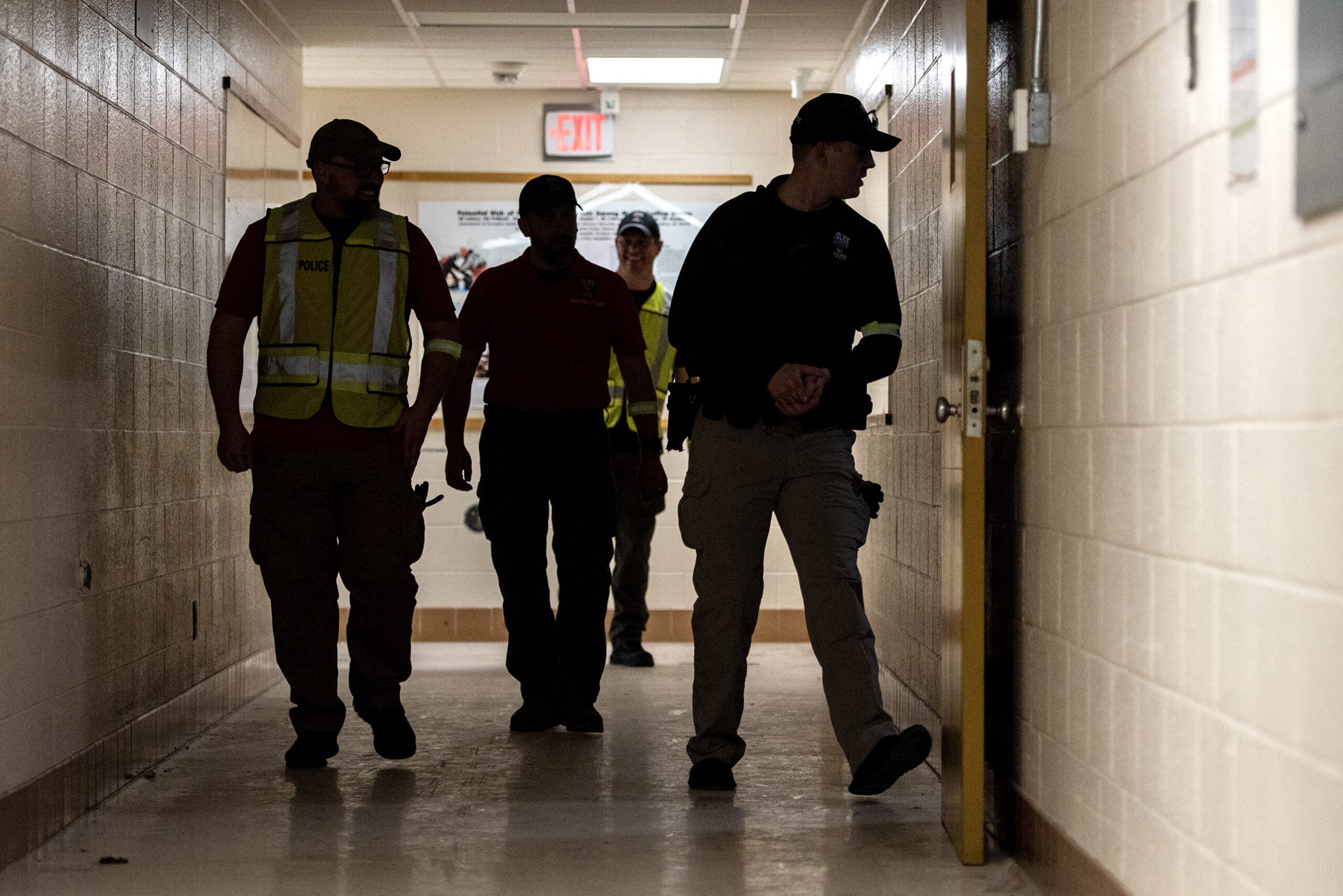
Training for how to respond to a shooter is necessary for law enforcement. But some have questioned whether active-shooter training done in elementary and high schools can have the effect of creating fear among students.
Franci Crepau-Hobson is a professor of school psychology at the University of Colorado Denver. She said mass school shootings are statistically rare, but story after story about high profile incidents can take a mental toll on young people.
A 2018 Pew Research Center survey found a majority of teens who responded worried a shooting could happen at their school.
If done poorly, Crepeau-Hobson said even the drills aimed at saving lives can compound those fears. In some cases, schools have even held drills without informing students they would be happening, leaving students terrified.
“It should never be a surprise because otherwise people believe there’s a real-life threat,” Crepeau Hobson said. “And that is terrifying and it can be traumatizing.”
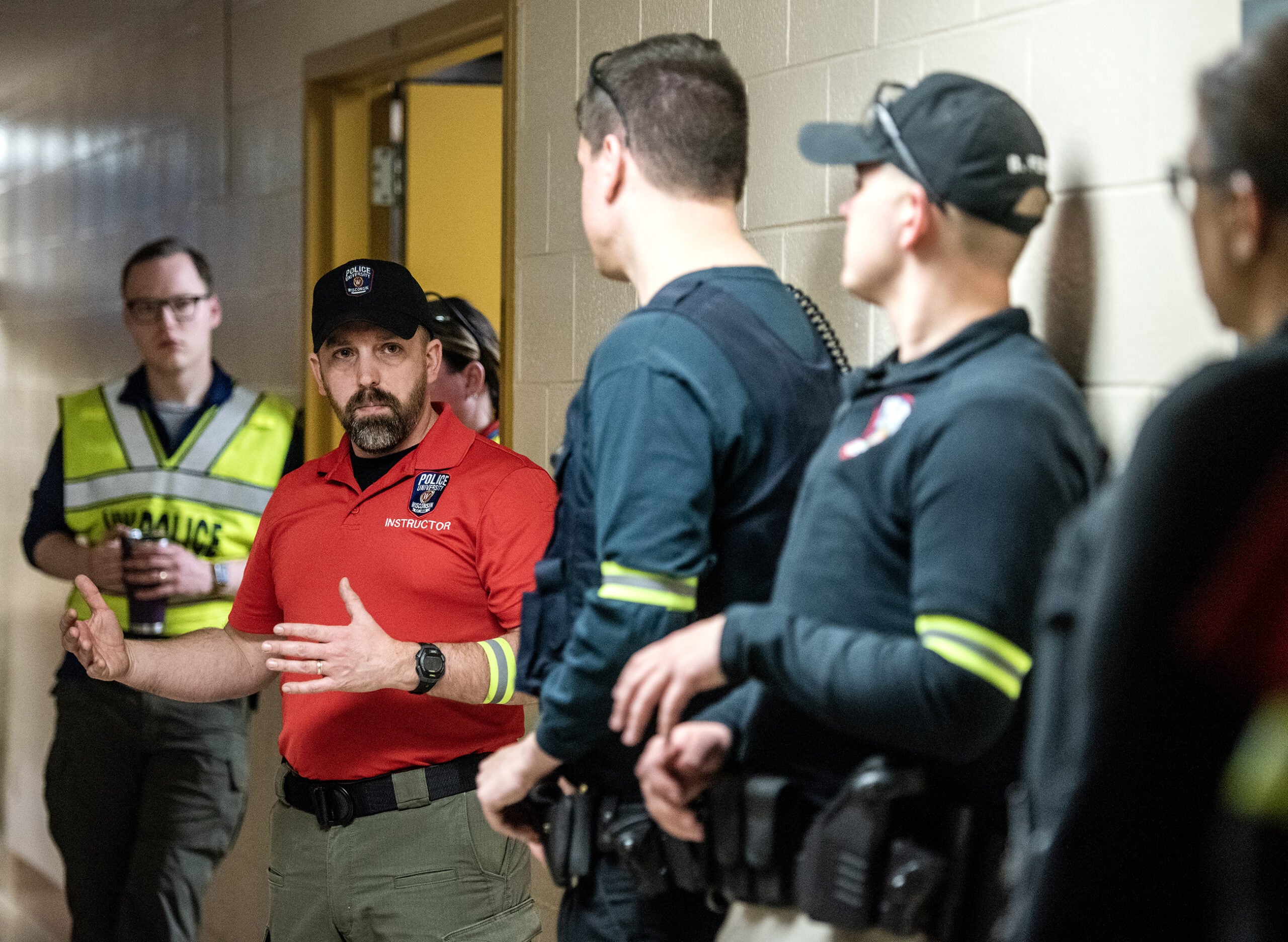
Even preannounced drills were terrifying, said former Madison middle school teacher and current Department of Public Instruction communications director Abigail Swetz. Lights would be shut off, students would huddle in a corner and a piece of paper was placed over the window of doors to the classroom to keep anyone from seeing inside.
“The toughest part of an active shooter drill in my classroom was when people would go around and knock on the doors, which was part of the protocol,” Swetz said. “And we were not allowed to let anyone in because in an actual active shooter situation, that could be the shooter holding someone hostage and saying, ‘Knock on this door and let me in,’ right? And that is terrifying.”
In the back of her mind, Swetz said she thought about how she’d put her body on the line to protect students, “and that if this were real, it is entirely possible that they would watch me die and that would not be enough to save them.”
Swetz, along with Madison first-year students Mary Bair and Simona Laudicina, say restricting access to military style rifles like the AR-15 used by many active shooters would help prevent high-casualty mass shootings. In lieu of legislative action, Swetz said the wrong people are being asked to fix the problem.
“We’re asking teachers and students and schools in general to stop death, frankly,” Swetz said.
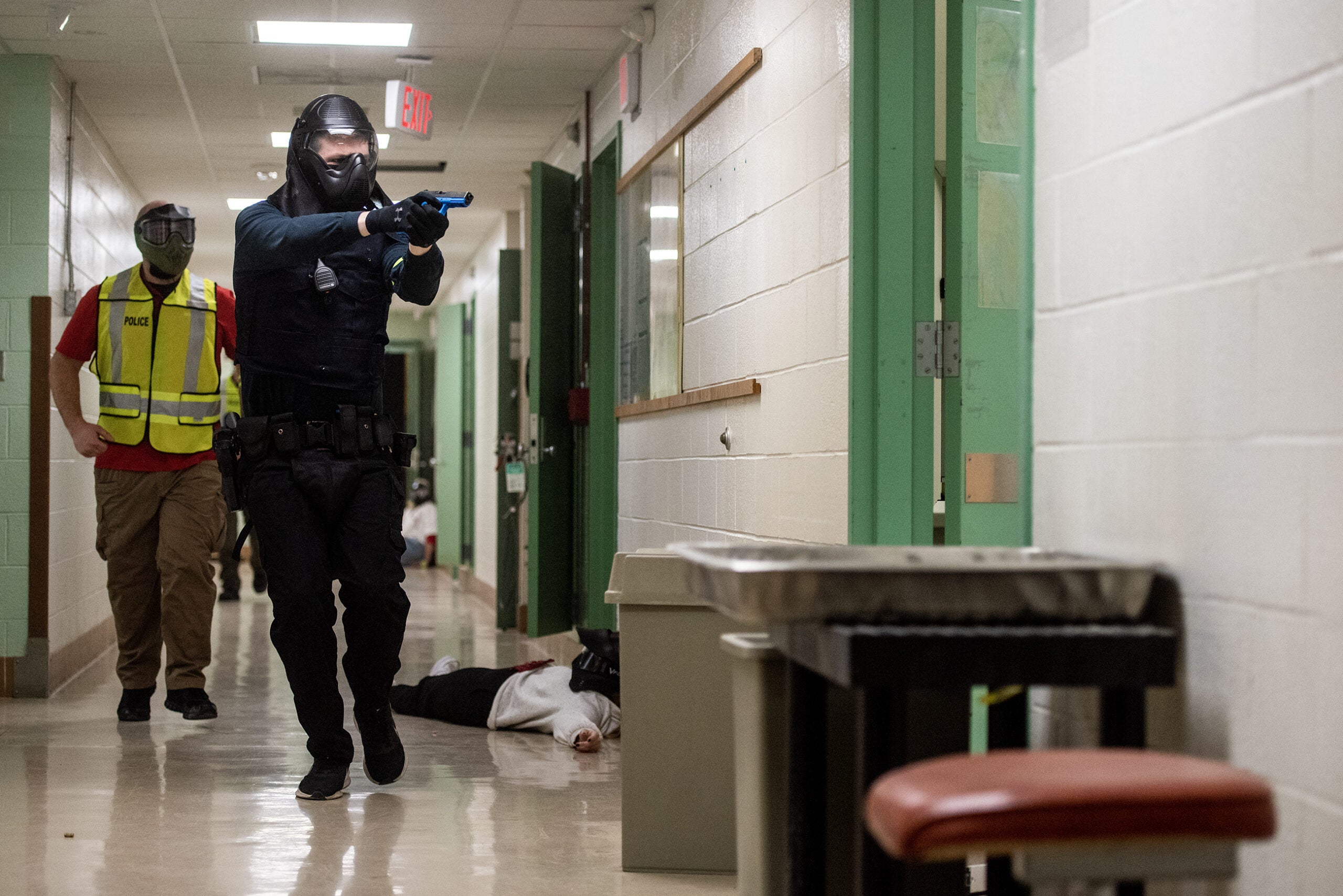
Wisconsin Public Radio, © Copyright 2026, Board of Regents of the University of Wisconsin System and Wisconsin Educational Communications Board.
